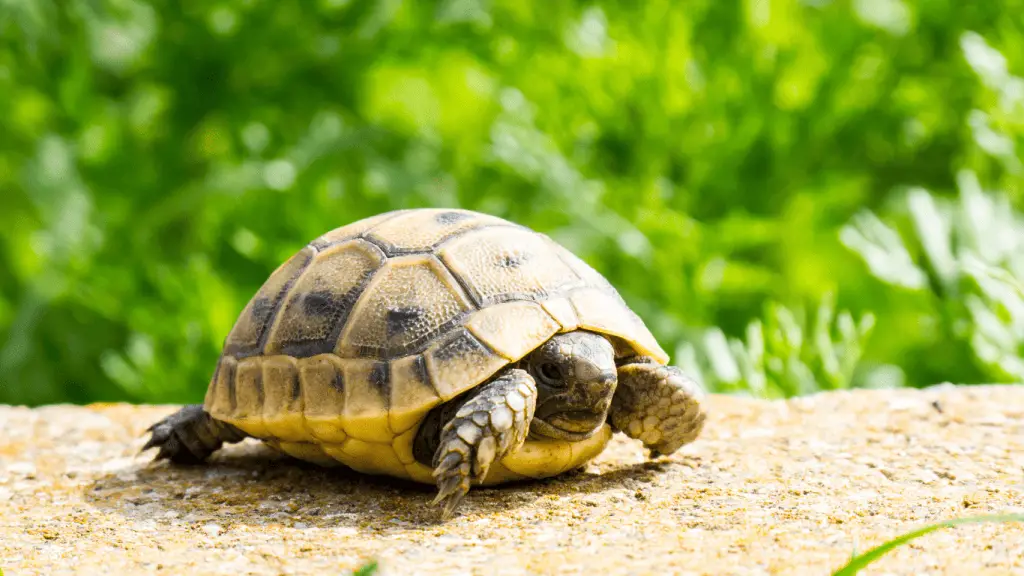Some common reasons for turtles kicking their back legs include being scared, pregnant, stressed, experiencing bad temperature or diet, or being subjected to bullying.
By familiarizing yourself with these potential causes, you can address any issues that might be making your turtle uncomfortable, ensuring they thrive in their environment.
In the subsequent sections of this article, we will delve deeper into each of these causes and provide recommendations on how to address them.
Possible Reasons for Turtle Kicking Back Legs

Scared
When your turtle is new to its environment, it may act strangely due to fear. This can include kicking its back legs. As it becomes more comfortable in its new home, this behavior should decrease. Be patient and give the turtle time to adjust.
Pregnant
If your turtle is pregnant, it may kick its back legs due to discomfort. This behavior usually occurs in conjunction with other signs of pregnancy, such as decreased appetite and increased hiding behavior.
Stressed
Stress can also cause a turtle to kick its back legs. Identify stressors, such as loud noises or sudden changes in the environment, and try to eliminate them to reduce the turtle’s stress.
Bad Temperature
A turtle that is too cold or too hot may kick its back legs as a response to the uncomfortable temperature. Make sure to provide an adequate heat source and ensure the temperature is within the recommended range for your turtle’s species to make your turtle comfortable.
Bad Water Temperature
Turtles rely on water temperature to regulate their body heat. If the water temperature is too low or too high, your turtle may kick its back legs in an attempt to adjust to the uncomfortable conditions. Be sure to maintain a proper water temperature for your turtle’s species.
Bad Basking Area Temperature
A turtle needs an appropriate basking area temperature to properly digest its food and maintain overall health. If the basking area temperature is too high or too low, your turtle may experience discomfort and kick its back legs. Always maintain the correct basking area temperature for your turtle’s species.
Bad Diet
An improper diet can lead to health issues, such as hind leg paralysis, resulting in your turtle kicking its back legs. Provide a balanced diet consisting of both protein and vegetables to maintain your turtle’s health.
Bullying
If your turtle is housed with other turtles, it may be experiencing bullying from its tank mates. This can cause stress and subsequent kicking of the back legs. Observe your turtles’ behavior, and if bullying is observed, separate the aggressive turtle from the others to reduce stress and eliminate the kicking behavior.
Conclusion
In summary, when your pet turtle kicks its back legs, it may be due to a variety of reasons, such as stress, fear, poor temperature, bad diet, or bullying. It’s crucial to assess and address any underlying issues to ensure the health and well-being of your turtle.
Cold-blooded reptiles like turtles and tortoises rely on their environment to regulate their body temperature. Make sure you provide proper heating and lighting sources that mimic their natural habitat.
Turtles can suffer from various diseases and infections, both bacterial and fungal in nature. These infections can impact their intestine and other vital organs. Be attentive to signs of discomfort in your pet, as prompt treatment can prevent complications and reduce the risk of needing surgery.
Parasites are another common issue that may lead to symptoms like irregular leg movements. In such cases, seeking veterinary help may be critical to protect your turtle’s health and potentially save its life.
Constipation or stones in your pet turtle’s digestive system can lead to strain and kicking behavior as well. Monitor your turtle’s diet and ensure it receives the proper nutrients and access to clean water to help prevent these issues.




Leave a Reply